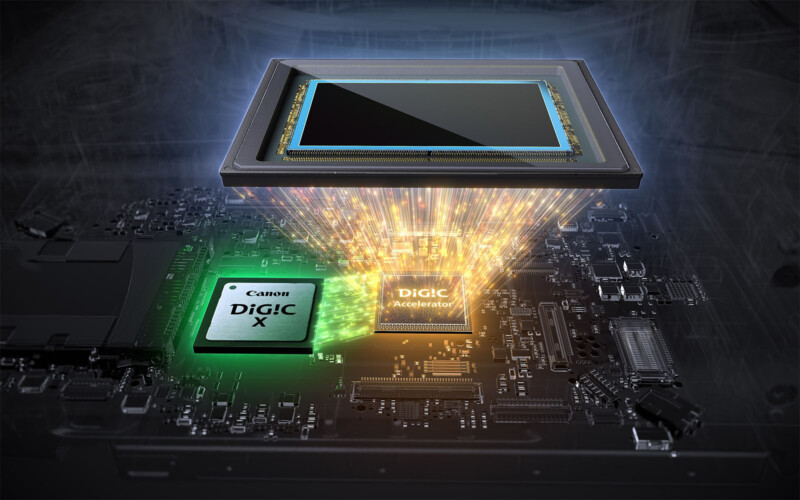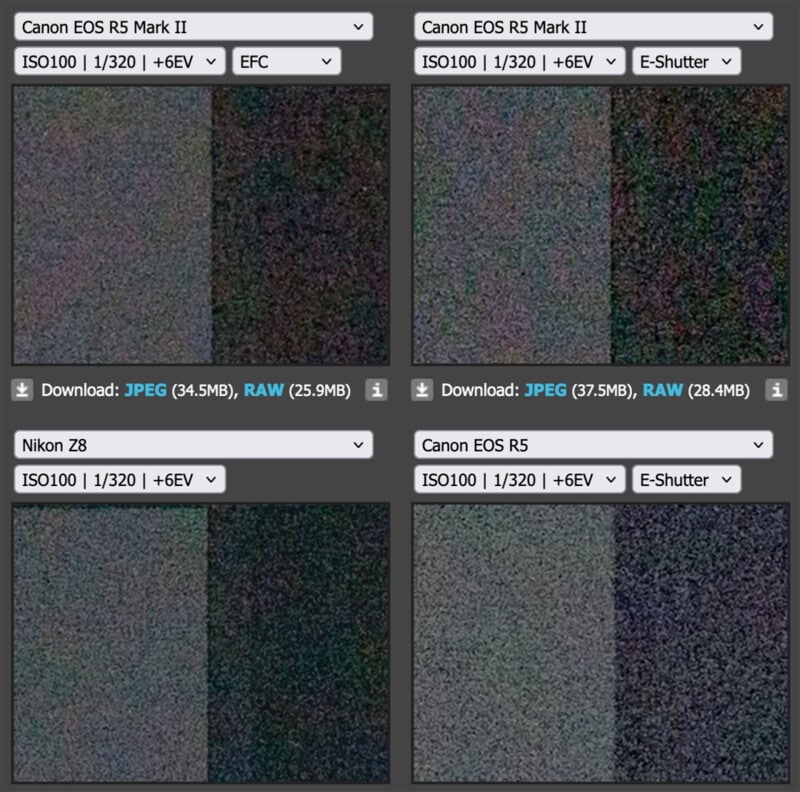The Canon R5 II’s New Stacked Sensor Comes with a Dynamic Range Penalty
![]()
Review samples of Canon EOS R5 Mark II have begun arriving. DPReview has published its studio scene test results for Canon’s new 45-megapixel full-frame camera, showing that the R5 II’s newfound speed comes at a cost, albeit one most photographers may be willing to pay.
DPReview‘s studio test results show that in terms of resolution, the R5 II is on pace with its predecessor, which makes perfect sense. Both cameras have 45-megapixel full-frame image sensors.
However, the sensors are very different. The original R5 sports a standard CMOS image sensor, which isn’t stacked or even backside-illuminated. It’s still an excellent sensor regarding image quality, including dynamic range performance. Its biggest drawback is poor readout speed, which hampers many aspects of the camera’s overall performance, including continuous shooting, autofocus performance, rolling shutter, and video recording.
The R5 II, on the other hand, has a new stacked 45-megapixel sensor, which promises significantly faster readout speed and improved overall performance across the board.
However, the extra speed and processing performance require more electronics, which, all else equal, reduces the amount of space available for photodiodes to absorb light.

There’s no free lunch with image sensors, and every individual decision is not only in service of one priority or another, but it impacts all other choices.

“In what’s becoming a familiar story, there appears to be a trade-off between speed and dynamic range on the EOS R5 II’s sensor,” DPReview writes, adding that photographers who push and pull the R5 II’s RAW files will encounter more noise than they would have with the original R5.
Further, the R5 II’s impressive continuous shooting speeds require using the camera’s electronic shutter. DPReview‘s testing shows that this shutter mode comes with “an appreciable noise cost.”
Not only does the R5 Mark II’s new stacked sensor design come with a hit to dynamic range, but the benefits of the move — more speed — necessitate an additional penalty thanks to the performance with the electronic shutter.

While Nikon’s new Z6 III has a dynamic range deficit compared to its predecessor thanks to the novel partially-stacked image sensor, the camera at least has no additional penalty when using its electronic shutter and shooting at maximum speed.
In any event, even though there seem to be some compromises with the move to a stacked sensor, the Canon EOS R5 II promises many compelling features and is arguably Canon’s most exciting new camera in a while. PetaPixel‘s full Canon EOS R5 Mark II Review will be published in the coming weeks.
Image credit: Studio test scene images courtesy of DPReview